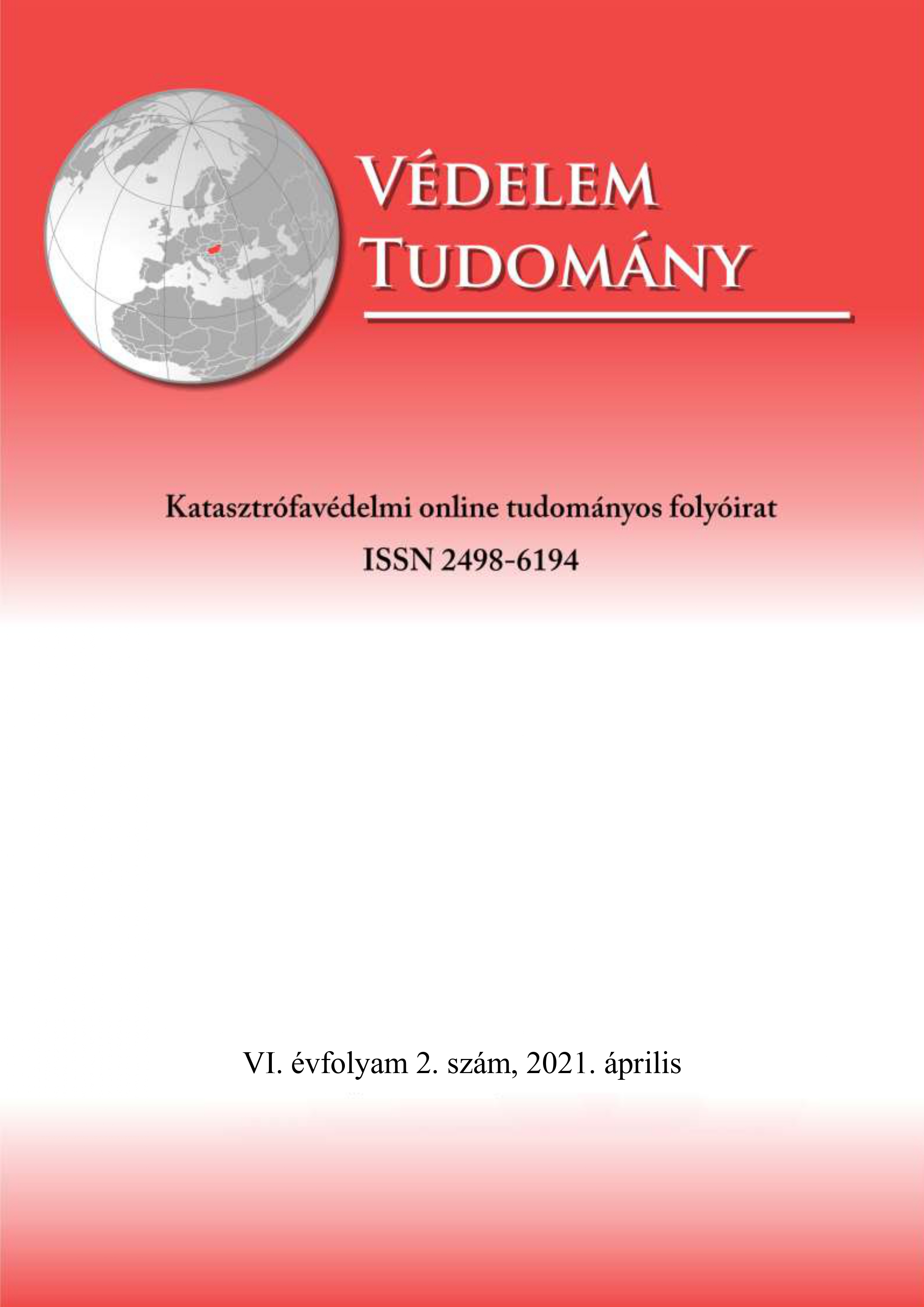Radon emission of building materials and recycled structural materials - an international collation
Abstract
Radon is a naturally occurring colourless, odourless, radioactive gas, which is the decay product of radium. The most widely known radioactive sources are uranium, thorium and radium, but ionizing radiation can also be found elsewhere. Any building material of natural origin may contain a certain quantity of radioactive elements. The carriers of this radioactivity are called the NORMs (Naturally Occurring Radioactive Minerals). Reused building materials in many cases include unknown components and thus deserve priority attention regarding radioactivity. In Hungary, 70% of these materials is soil, of which only 15% is being reused. It is advised to utilize them with exceptional precaution, as they may contain dangerous elements regarding radioactivity due to their unbeknown compound. In this article we delineate research and results of various countries; showing relations of high concentration and their dangers, and additionally, their connection to building materials, all with the goal of attracting attention to the hazards of indoor radon concentration.
References
Váradi E. (2013): Radonpotenciál becslés módszereinek vizsgálata Vasadon. Budapest: Eötvös Loránd Tudományegyetem, Természettudományi Kar, Környezettudományi Centrum.
Public Health England, 2018: UK National Radon Action Plan. London: PHE publications 1-2
SRE HomeServices (2017): How does radon enter a building? https://radontestnebraska.com/resource-center/how-does-radon-enter-a-building/ Last time opened: 2021. 02. 20.
Otton, J. K. (1992): The Geology of Radon. University of Michigan Library
Nemoda F. (2018): Radon, than task waiting for a solution - EPKO2018
World Health Organization (WHO)(2009): WHO Handbook on Indoor Radon. A Public Health Perspective. Franciaország: World Health Organization.
European Commission, Joint Research Centre, European Soil Data Centre: GISCO Database Manual part 1. Chapter 3. https://esdac.jrc.ec.europa.eu/gisco_dbm/dbm/ Last time opened: 2021.02.20.
Központi Statisztikai Hivatal: A társadalmi haladás mutatószámrendszere. 2.8.1. Egészségi állapot (2004–2018)
Nikl, I. (1996): The Radon Concentration and Absorbed Dose Rate in Hungarian Dwellings. Radiation Protection Dosimetry. Vol. 67, No. 3, pp. 225-228.. Nuclear Technology Publishing.
Hámori K., Tóth E., Köteles Gy., Pál L. (2004): A magyarországi lakások radonszintje (1994 – 2004). Egészségtudomány, Vol. 48, 283 – 299.
Mjönes, L. (1993): Védekezés a radon ellen – a svéd példa. Fizikai Szemle 1993/4. 162.o. transl. Haiman Ottó, ELTE Atomfizikai Tanszéke.
Axelsson G., Andersson E. M., Barregard L. (2015): Lung cancer risk from radon exposure in dwellings in Sweden: how many cases can be prevented if radon levels are lowered? Gothenburg: Department of Occupational and Environmental Medicine, University of Gothenburg.
European Commission, Joint Research Centre, Directorate G – Nuclear Safety & Security, Radioactivity Environmental Monitoring project: Indoor radon concentration. 2017. https://remon.jrc.ec.europa.eu/About/Atlas-of-Natural-Radiation/Indoor-radon-AM/Indoorradon-concentration
ICRPaedia: Radon: Units of Measure. 2019. http://icrpaedia.org/Radon:_Units_of_Measure Last time opened: 2020.03.06.
World Health Organization: INTERNATIONAL RADON PROJECT. SURVEY ON RADON GUIDELINES, PROGRAMMES AND ACTIVITIES. FINAL REPORT. 2007. pp. 31-33.
Saad, A.F. & Abdalla, Y & Hussein, Nagi & Elyaseery, Ibrahim. (2010). Radon exhalation rate from building materials used on the Garyounis University campus, Benghazi, Libya. Turkish Journal of Engineering and Environmental Sciences. 34. 10.3906/muh-0810-17.
Minda M., Tóth Gy., Horvát I., Barnet I., Hámori K., Tóth E. (2009): Indoor radon mapping and its relation to the geology in Hungary. Journal of Environmental Geography, Vol. 57., pp. 601-609.
Mjönes, L. (1993): Védekezés a radon ellen – a svéd példa. Fizikai Szemle 1993/4. 162.o. Ford. Haiman Ottó, ELTE Atomfizikai Tanszéke.
Cheng, J., Guo, Q., Ren, T. (2002): Radon Levels in China. Journal of Nuclear Science and Technology, Vol. 39. No. 6. p. 695-699.
Shang, B. et al. (2006): Radon Levels Survey in Residences in China. National Institute for Radiological Protection, China.
Najam, L.A., Tawfiq, N.F., & Mahmood, R.H. (2013): Radon Concentration in Some Building Materials in Iraq Using CR-39 Track Detector.
Keller G, Hoffmann B, Feigenspan T. Radon permeability and radon exhalation of building materials. Science of the Total Environment. 2001;272(1):85–89.
Tuccimei, Paola & Castelluccio, Mauro & Soligo, Michele & Moroni, Massimo. (2009). In: Building Materials RADON EXHALATION RATES OF BUILDING MATERIALS: EXPERIMENTAL, ANALYTICAL PROTOCOL AND CLASSIFICATION CRITERIA. Building Materials: Properties, Performance and Applications. Table 2.
Völgyesi P. (2015): Beltéri radioaktivitás és az építőanyagok szerepének vizsgálata a közép-magyarországi régióban. Budapest: Eötvös Loránd Tudományegyetem. Kőzettani és Geokémiai Tanszék. Litoszféra Fluidum Kutató Labor.
United States Environmental Protection Agency (EPA): Natural Radioactivity in Building Materials. https://www.epa.gov/




